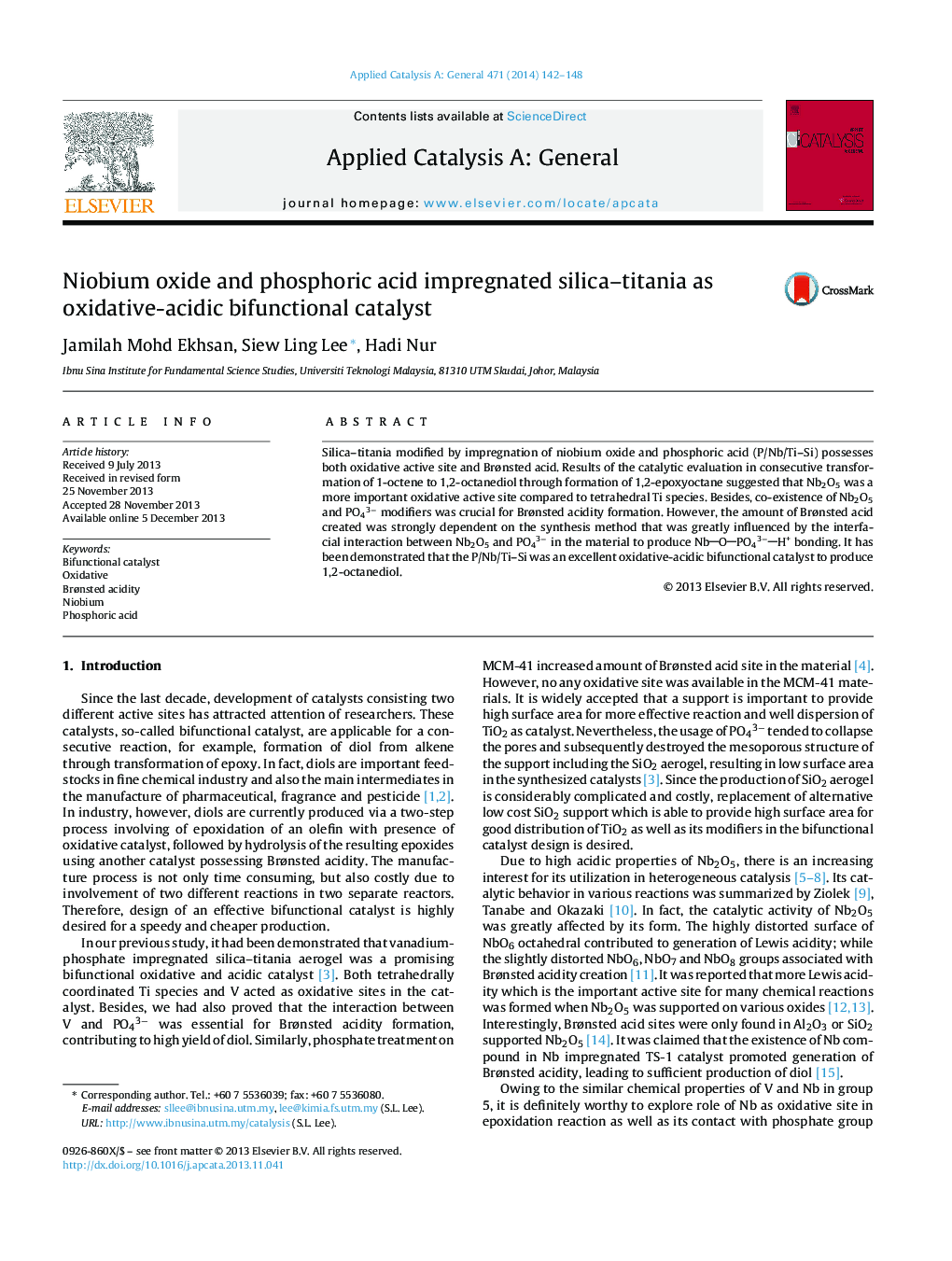| Article ID | Journal | Published Year | Pages | File Type |
|---|---|---|---|---|
| 39911 | Applied Catalysis A: General | 2014 | 7 Pages |
•Silica–titania modified by impregnation of niobium oxide and phosphoric acid.•Catalyst possesses both oxidative active site and Brønsted acid site.•Transformation of 1-octene to 1,2-octanediol through the formation of 1,2-epoxyoctane.•Oxidative-acidic bifunctional catalyst to produce 1,2-octanediol.
Silica–titania modified by impregnation of niobium oxide and phosphoric acid (P/Nb/Ti–Si) possesses both oxidative active site and Brønsted acid. Results of the catalytic evaluation in consecutive transformation of 1-octene to 1,2-octanediol through formation of 1,2-epoxyoctane suggested that Nb2O5 was a more important oxidative active site compared to tetrahedral Ti species. Besides, co-existence of Nb2O5 and PO43− modifiers was crucial for Brønsted acidity formation. However, the amount of Brønsted acid created was strongly dependent on the synthesis method that was greatly influenced by the interfacial interaction between Nb2O5 and PO43− in the material to produce NbOPO43−H+ bonding. It has been demonstrated that the P/Nb/Ti–Si was an excellent oxidative-acidic bifunctional catalyst to produce 1,2-octanediol.
Graphical abstractFigure optionsDownload full-size imageDownload high-quality image (179 K)Download as PowerPoint slide
